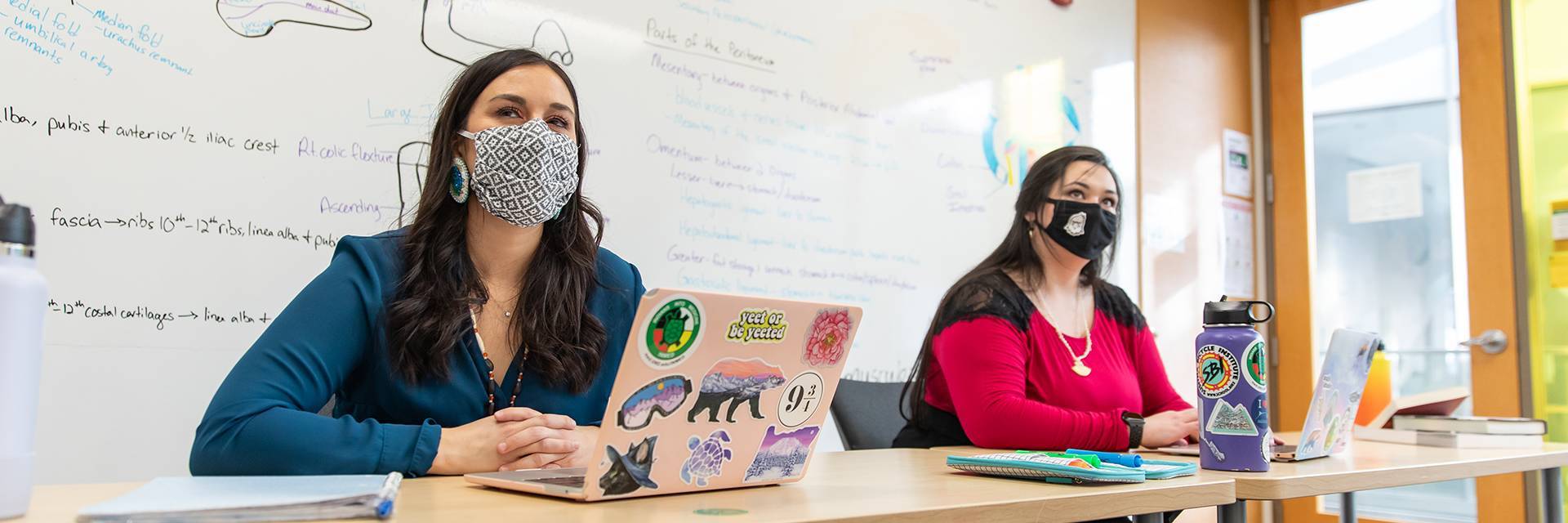
Enroll Anytime Human Anatomy and Physiology I
Prepare for a career in healthcare, fitness, or science with a strong introduction to how the body works at the chemical, cellular, tissue, and organ systems.
| Course Title | BIMD 220: Human Anatomy & Physiology I |
|---|---|
| Credits | 3 undergraduate credits |
| Pre- or Corequisites | Either BIOL 150 and BIOL 150L, or CHEM 116 and CHEM 116L, or CHEM 121 and CHEM 121L |
| Format | Online - Self-Paced Enroll Anytime |
| Cost |
Undergraduate tuition is $407.97 per credit. Visit the Costs & Aid page for more information. |
About the Human Anatomy & Physiology Online Courses
BIMD 220 (3 credits) and BIMD 221 (3 credits) together are a complete survey of the anatomy and physiology of the major human organ systems and the foundational concepts required to understand them. BIMD 220 covers beginner material on introductory A&P, cells, and tissues, as well as advancing through the skin, skeletal, muscle and nervous organ systems. BIMD 221 is a more advanced study of the endocrine, lymphatic, cardiovascular, respiratory, digestive, urinary, and reproductive systems. Each concept is presented through the lens of a diverse human population and both BIMD 220 and 221 are validated as essential studies special emphasis courses covering "The Diversity of Human Experience" topic. Together the courses are designed to meet field standards using the HAPS learning outcomes and goals.
These courses will use the evidence based best practices of a flipped classroom and active learning. Learning is work and involves student participation.
This course contains 6 content units. Each unit is broken down into chunks of material. Each chunk includes a video and a quiz. Assignments are used to reinforce and expand upon unit content with the goal of fostering interconnection of content among units, and they are grounded in application to the diversity of human experience. The topics covered in BIMD 220 are:
- Introduction
- Chemicals and Cells
- Tissue and Skin
- Skeletal System
- Muscular System
- Nervous System and Senses
What Can I Expect in Each Unit?
Students have 3 to 9 months to complete this course from the time of enrollment. This includes 7-10 business days to process registration, 8 weeks of coursework and 3-5 days for the final grade to appear on your transcript. You may work at your own pace and complete lessons on your own schedule. The instructor will grade up to three assignments per week.
Each unit will consist of the following elements located in Blackboard:
Quizzes
Each unit of the course has between six and ten quizzes, each containing between two and eight questions. The questions on each quiz are drawn from a quiz bank concentrating on the content presented in the lecture video aligning with each quiz. Quizzes are repeatable, with the most recent score retained in the gradebook. Quizzes do not have a time limit and are not proctored.
Assignments
Each unit of the course will have two or three assignments. Assignments will include a variety of tasks related to the content of the unit. They may include article annotations and summaries, Venn diagram construction, web activity screen shots, and similar styles of activities.
Exams
This course has six unit tests and one final exam. Each unit test contains 40 questions drawn randomly, half from the unit quiz test banks and half from a test bank of questions similar, but not identical, to the quiz questions. The final exam will be comprehensive. It will contain 40 questions drawn randomly from the unit quiz test banks and 4 general concepts short answer questions. The short answer section of the final exam will be open book, completed as an assignment. The multiple choice question section of the final exam will be timed, with a time limit of one hour, but repeatable
The 6 Unit exams are proctored through Honorlock. The final exam is not proctored. More information about the exams is provided in the Blackboard course.
Final Project
The final project will be completed and submitted for grading in four stages. The work of the project is designed to be spread throughout the course. Each student may choose from three options for their final project: a book review, a research paper, or a volunteering project.
BIMD 220L: Human Anatomy and Physiology Lab I.
BIMD 220 is accompanied by a 1-credit lab course. You can find information about that course at the BIMD 220L course webpage.
Required Textbook and Materials
The course uses the free textbook OpenStax Anatomy and Physiology, 2e.
How will the course appear on my transcript?
You may enroll at any time and have up to 9 months to complete this online course.
The credits earned will be recorded on your UND transcript based on the date you registered
for the course. It will appear on your transcript in the same way as a course taken
during a regular semester. There is no indication that the course was taken online
or that you completed it at your own pace.
Consult the table on our How Enroll Anytime Courses Work page for a current listing of Enroll Anytime Registration Dates and the semester
information that will appear on a UND transcript.
Why Take Online Classes at UND?
Here are a few reasons why you should take an online enroll anytime course at UND:
- Great customer service – Our registration team is ready to answer questions quickly so you can focus on your coursework.
- Affordable – UND's enroll anytime courses are priced at North Dakota's affordable, in-state tuition rate.
- Accredited – UND is accredited by the Higher Learning Commission.
- Easily transfer credits – Transferring credits is always at the discretion of the institution to which the credits are being transferred. In general, credits from schools/universities that are regionally accredited by the Higher Learning Commission transfer to other regionally accredited institutions. UND's online courses appear on your UND transcript in the same way as other courses.
Flexible 100% Online Course
You'll take this online course at your own pace. Some students thrive in this environment, while other students may struggle with setting their own deadlines. If you have successfully taken an independent study or correspondence course previously, UND’s enroll anytime courses may be right for you. Still not sure? Take our online quiz to help determine if online enroll anytime courses are right for you.
Course information including tuition, technology requirements, textbooks, lessons and exams is subject to change without notice.
